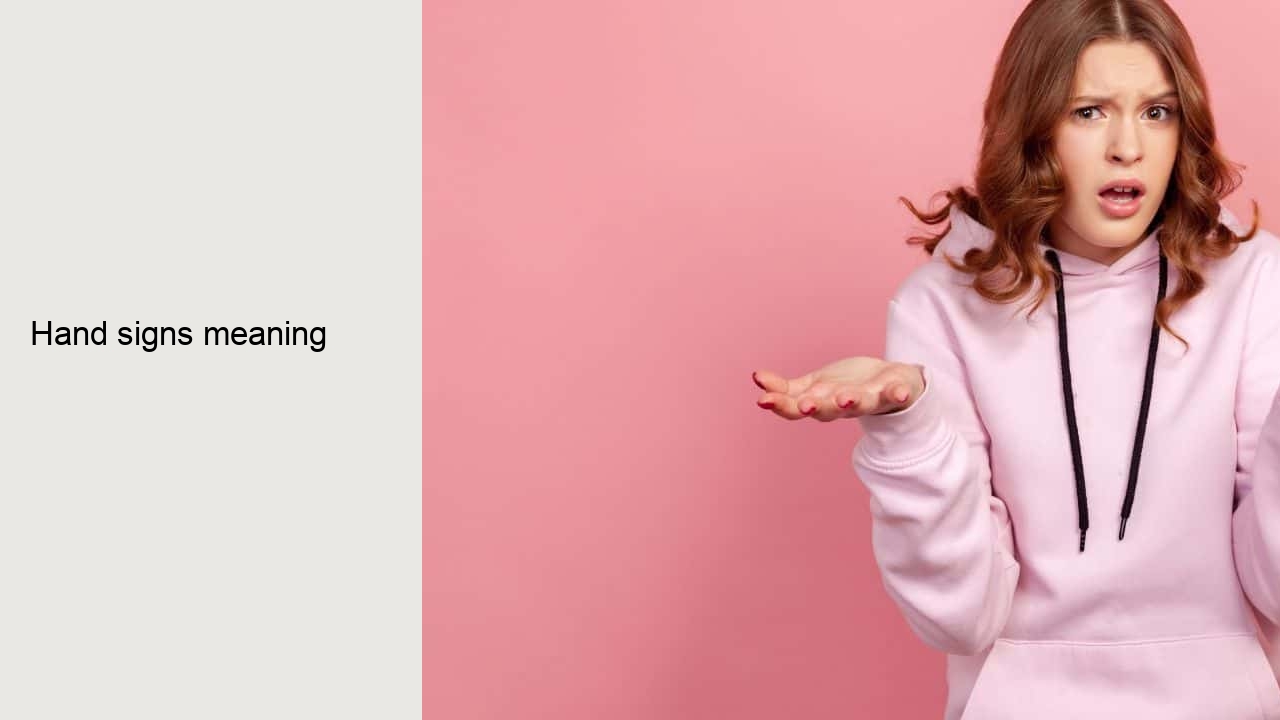
The hand gesture known as the "fig sign" is made by placing the thumb between the index and middle fingers. This gesture is considered to be vulgar in many cultures and is often used to indicate displeasure or to insult someone.
Finger hand gestures are an intricate and nuanced aspect of nonverbal communication, conveying meaning through the subtle manipulation of digits. From the simple thumb's up to the enigmatic "I love you" hand gesture, these signals can express a wide range of emotions, ideas, and intentions. In this article, we will delve into the meanings, origins, and cultural significance of some of the most common and important finger hand gestures, accompanied by illustrative pictures.
Hand gestures are a rich and complex form of nonverbal communication that can convey a wide range of meanings and emotions. They are an integral part of human interaction, and understanding the various hand gestures and the meanings they convey can be a powerful tool for improving communication and building stronger relationships with others.
In addition to these common hand signs, there are many other hand signals and body language cues that are used to convey meaning and intent. For example, crossing one's arms can indicate defensiveness or reluctance, while holding one's hands behind the back can signal confidence and authority. Understanding the meaning and significance of different hand signs can help us communicate more effectively and build stronger connections with others.
The "ok" sign is made by forming a circle with the thumb and index finger. This gesture is considered to be a sign of agreement, approval, or to indicate that everything is okay.
The thumb's up is one of the most universally recognized hand signs, used to indicate approval, agreement, or good luck. Its origins can be traced back to ancient Rome, where it was used to signal that a gladiator should be spared. Today, this gesture is often used in casual conversation and social media to express support or endorsement.

The "devil horns" hand sign, which is made by holding up the index and pinky fingers while keeping the other fingers curled down, is often used among teens to indicate rock music, rebellion or as a sign of good luck.
The "talk to the hand" gesture, made by holding up the hand in front of the face, palm facing outwards, is used to indicate that the person does not want to listen or engage in further communication. This gesture is often used to dismiss or reject an idea or person.
One of the most fundamental hand gestures is the simple wave. This gesture is often used as a greeting or farewell and can convey a sense of friendliness or goodwill. The wave can be executed in a variety of ways, from a casual flick of the hand to a more formal and prolonged sweep of the arm. When executed correctly, the wave can be a powerful tool for establishing a connection with others.
It should be noted that certain group of people also use this hand gesture as a sign of opposition and resistance, particularly in the context of political and social movements.

Hand gestures are an integral part of human communication and convey meaning in various cultures and contexts. From a simple wave to a complex sign language, hand gestures have been used to express emotions, convey instructions, and even tell stories. The following is a comprehensive list of hand gestures and their meanings, with a focus on the nuances and subtleties that make them so fascinating and versatile.
Hand gestures are a fundamental aspect of human communication, and they play an especially important role in urban environments. From simple hand signals to more complex body language, hand gestures convey a wide range of meaning and can be used to express a variety of emotions, ideas, and intentions. In this article, we will explore some of the most common and important hand gestures used in urban settings, and discuss their meanings, origins, and cultural significance.
Finally, the "hand over the heart" gesture is made by placing the hand over the heart. This gesture is often used to indicate sincerity, loyalty, or to show respect.
Hand gestures are a subtle yet powerful form of nonverbal communication. They can convey a wide range of emotions, thoughts, and intentions, and are often used in conjunction with verbal language to add emphasis or clarify meaning. In this article, we will delve into the rich tapestry of hand gestures, exploring the various meanings they convey and providing examples and pictures to illustrate our points.
The fist bump is another popular hand gesture, often used as a form of greeting among friends or colleagues. This gesture is made by touching the knuckles of one closed fist to those of another person. The fist bump can convey a sense of camaraderie, unity, or agreement. It is a popular alternative to the traditional handshake, particularly in settings where physical contact is limited.
Basic hand gestures include gestures such as pointing, waving, beckoning, and thumb-up/thumb-down. These nonverbal cues can convey a wide range of messages and can be used in various social contexts. They are an integral part of human communication, and their meanings can vary widely depending on cultural and individual differences.
Inappropriate hand gestures are those that are considered offensive, insulting, or vulgar in a particular culture or context. Examples include the middle finger, which is considered highly disrespectful and offensive in most cultures, the okay sign, which can be considered racist or offensive in some places, and the fig sign, which is considered vulgar in some cultures. Additionally, there are hand gestures that can be considered culturally insensitive or disrespectful such as the hand-heart gesture and the "thumbs up" gesture which can be offensive in some cultures. It's important to be aware of the cultural and social norms in any given context before using any hand gestures to avoid inadvertently causing offense.
Holding two fingers down can hold different meanings depending on the context and culture. In some sports, it is a sign of a referral to the video assistant referee. Additionally, it can be used as a symbol of disapproval or rejection, opposite to holding up two fingers which can be considered as a symbol of peace and goodwill. It can also be used as a sign of disappointment or defeat. As with any hand gesture, the meaning can vary and it's important to be aware of the context and cultural implications before using this gesture. It's important to note that in certain cultures, it might not have a specific meaning, and it's best to be cautious and respectful when using any hand gestures.
Holding up one finger can hold different meanings depending on the context and culture. In American Sign Language, it represents the number one. In some sports, it's a sign of a referral to the video assistant referee. Additionally, it can be used as a symbol of singularity or unity, as in the phrase "one for all, and all for one." On the other hand, it can also be considered as an offensive gesture in some cultures, as it can be interpreted as an expression of dominance or superiority. As with any hand gesture, the meaning can vary and it's important to be aware of the context and cultural implications before using this gesture.
Holding up one finger can hold different meanings depending on the context and culture. In American Sign Language, it represents the number one. In some sports, it's a sign of a referral to the video assistant referee. Additionally, it can be used as a symbol of singularity or unity, as in the phrase "one for all, and all for one." On the other hand, it can also be considered as an offensive gesture in some cultures, as it can be interpreted as an expression of dominance or superiority. As with any hand gesture, the meaning can vary and it's important to be aware of the context and cultural implications before using this gesture.